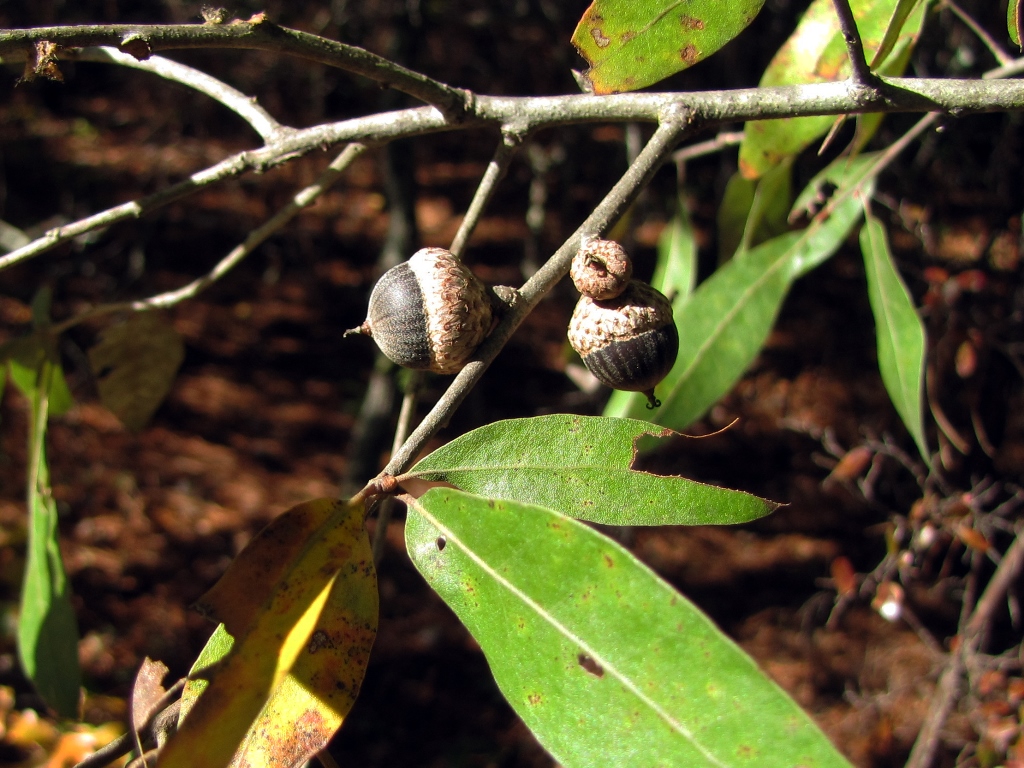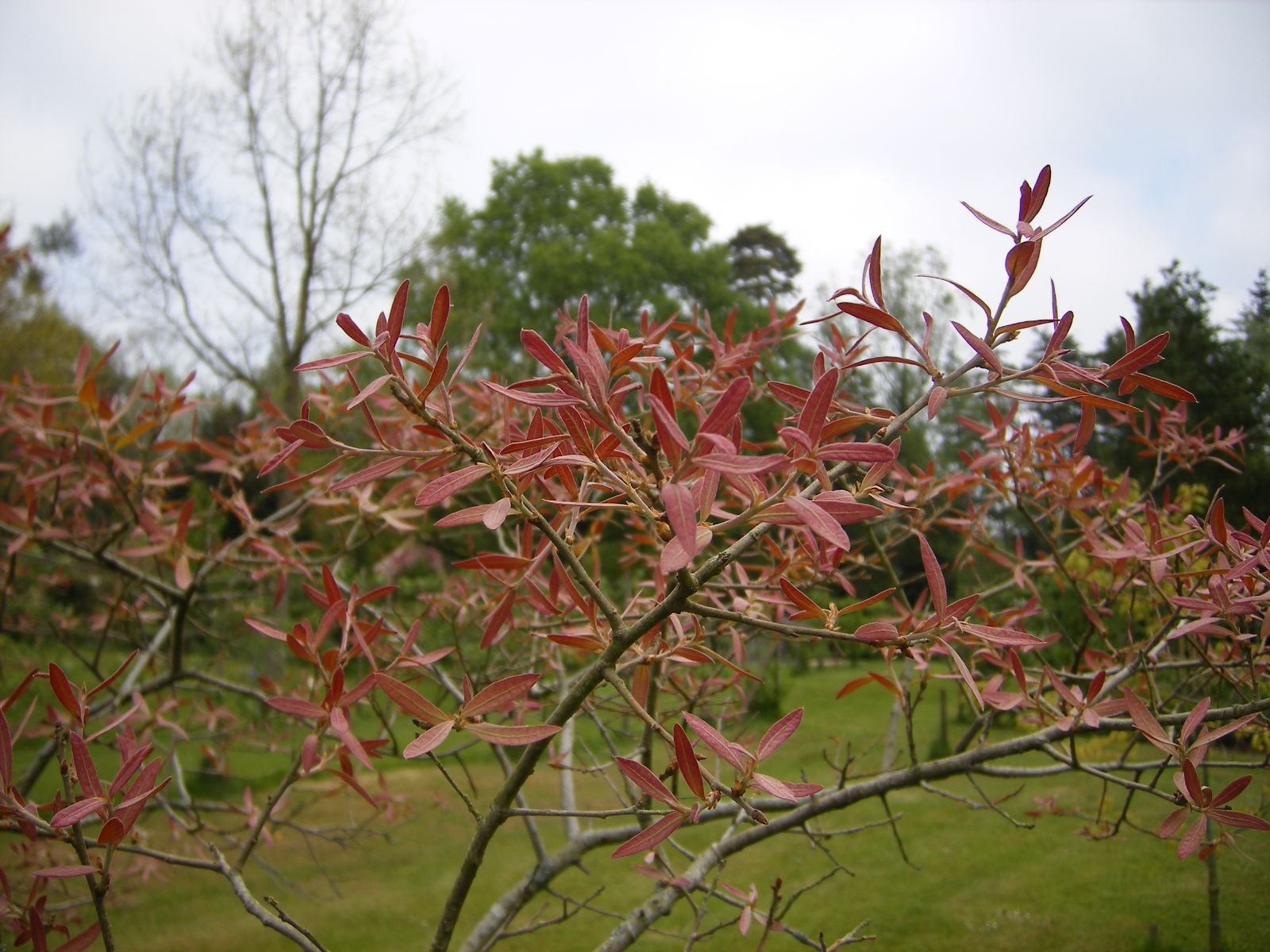Quercus incana
Sponsor
Kindly sponsored by
The Trees and Shrubs Online Oak Consortium
Credits
Article from New Trees by John Grimshaw & Ross Bayton
Recommended citation
'Quercus incana' from the website Trees and Shrubs Online (treesandshrubsonline.
Genus
- Quercus
- Subgen. Quercus, Sect. Lobatae
Common Names
- Bluejack Oak
Other taxa in genus
- Quercus acerifolia
- Quercus acherdophylla
- Quercus acrodonta
- Quercus acuta
- Quercus acutifolia
- Quercus acutissima
- Quercus afares
- Quercus affinis
- Quercus agrifolia
- Quercus alba
- Quercus aliena
- Quercus alnifolia
- Quercus aquifolioides
- Quercus arizonica
- Quercus arkansana
- Quercus aucheri
- Quercus augustini
- Quercus austrina
- Quercus × auzendei
- Quercus baloot
- Quercus bambusifolia
- Quercus baronii
- Quercus bicolor
- Quercus brantii
- Quercus buckleyi
- Quercus canariensis
- Quercus canbyi
- Quercus candicans
- Quercus castanea
- Quercus castaneifolia
- Quercus cerris
- Quercus chenii
- Quercus chrysolepis
- Quercus coccifera
- Quercus cocciferoides
- Quercus coccinea
- Quercus conspersa
- Quercus crassifolia
- Quercus crassipes
- Quercus delavayi
- Quercus dentata
- Quercus deserticola
- Quercus dolicholepis
- Quercus douglasii
- Quercus dumosa
- Quercus durifolia
- Quercus eduardii
- Quercus ellipsoidalis
- Quercus emoryi
- Quercus engelmannii
- Quercus engleriana
- Quercus euboica
- Quercus eugeniifolia
- Quercus fabri
- Quercus faginea
- Quercus falcata
- Quercus floribunda
- Quercus frainetto
- Quercus franchetii
- Quercus fruticosa
- Quercus fusiformis
- Quercus gambelii
- Quercus garryana
- Quercus geminata
- Quercus georgiana
- Quercus germana
- Quercus gilliana
- Quercus gilva
- Quercus glabrescens
- Quercus glauca
- Quercus graciliformis
- Quercus gravesii
- Quercus griffithii
- Quercus grisea
- Quercus guyavifolia
- Quercus hartwissiana
- Quercus hemisphaerica
- Quercus × hispanica
- Quercus hondae
- Quercus hypargyrea
- Quercus hypoleucoides
- Quercus ilex
- Quercus ilicifolia
- Quercus imbricaria
- Quercus infectoria
- Quercus insignis
- Quercus ithaburensis
- Quercus kelloggii
- Quercus × kewensis
- Quercus kiukiangensis
- Quercus laceyi
- Quercus laevis
- Quercus lamellosa
- Quercus lanata
- Quercus lancifolia
- Quercus laurifolia
- Quercus laurina
- Quercus × leana
- Quercus leucotrichophora
- Quercus × libanerris
- Quercus libani
- Quercus lobata
- Quercus lobbii
- Quercus lodicosa
- Quercus longinux
- Quercus longispica
- Quercus look
- Quercus × ludoviciana
- Quercus macranthera
- Quercus macrocalyx
- Quercus macrocarpa
- Quercus macrolepis
- Quercus marilandica
- Quercus mexicana
- Quercus michauxii
- Quercus mongolica
- Quercus monimotricha
- Quercus montana
- Quercus morii
- Quercus muehlenbergii
- Quercus myrsinifolia
- Quercus myrtifolia
- Quercus nigra
- Quercus × numidica
- Quercus oblongifolia
- Quercus obtusata
- Quercus oglethorpensis
- Quercus oxyodon
- Quercus pagoda
- Quercus palmeri
- Quercus palustris
- Quercus pannosa
- Quercus parvula
- Quercus petraea
- Quercus phellos
- Quercus phillyreoides
- Quercus planipocula
- Quercus poilanei
- Quercus polymorpha
- Quercus pontica
- Quercus prinoides
- Quercus pubescens
- Quercus pyrenaica
- Quercus rehderiana
- Quercus reticulata
- Quercus robur
- Quercus rotundifolia
- Quercus rubra
- Quercus rugosa
- Quercus rysophylla
- Quercus sadleriana
- Quercus salicina
- Quercus sartorii
- Quercus × schneideri
- Quercus schottkyana
- Quercus semecarpifolia
- Quercus senescens
- Quercus serrata
- Quercus sessilifolia
- Quercus setulosa
- Quercus shumardii
- Quercus sinuata
- Quercus spinosa
- Quercus stellata
- Quercus stenophylloides
- Quercus suber
- Quercus subspathulata
- Quercus tarokoensis
- Quercus tatakaensis
- Quercus texana
- Quercus tomentella
- Quercus trojana
- Quercus tungmaiensis
- Quercus turbinella
- Quercus × turneri
- Quercus undulata
- Quercus utahensis
- Quercus utilis
- Quercus uxoris
- Quercus variabilis
- Quercus velutina
- Quercus virginiana
- Quercus vulcanica
- Quercus warburgii
- Quercus wislizenii
- Quercus xalapensis
Tree, usually to 10 m, occasionally to 17 m, 0.7 m dbh, often forming thickets with thin, irregular crowns. Bark dark brown or black, becoming thick and corky, but broken into square plates. Branchlets brown or reddish brown and tomentose. Leaves deciduous (or semi-evergreen), 3–10 × 1.2–3.5 cm, ovate to elliptic or obovate, upper surface glossy and with sparse hairs along the midrib, lower surface densely tomentose and with longer (sometimes reddish) hairs in vein axils, 6–12 secondary veins on each side of the midrib, margins entire with one apical bristle, or occasionally a couple of weak lobes, apex acute to obtuse; petiole 0.2–1 cm long and tomentose. Cupules one (to two), sessile; saucer- or bowl-shaped, 1–1.8 × 0.4–0.8 cm, outer surface minutely pubescent, inner uniformly pubescent; scales acute to obtuse, tips tightly appressed. Acorn ovoid to subglobose, with one-quarter to one-third (rarely half) of its length enclosed in the cupule, 1–1.7 cm long, stylopodium prominent. Flowering March to April, fruiting September to October of the following year (USA). Nixon 1997, Sternberg 2004. Distribution USA: Alabama, Arkansas, Florida, Georgia, Louisiana, Mississippi, North Carolina, Oklahoma, South Carolina, Texas, Virginia. Habitat Barrens, hammocks, dunes and upland ridges between 0 and 250 m asl. Typically on well-drained, sandy soils. USDA Hardiness Zone ~5. Conservation status Least Concern. Illustration Nixon 1997, Sternberg 2004. Cross-references B485, K90.
Bean (1976b) believed this species to be not in cultivation in Britain, and although it is now represented here it is unlikely to become widely grown. It seems to require hot summers and does not prosper in the cool climate of northern Europe: all the specimens seen in England have the appearance of being there against their wishes. Perhaps the most contented-seeming is a 4.2 m tree (2008) at the Sir Harold Hillier Gardens, in a sunny site on sandy soil with shelter behind it. Grown from a collection made in 1993 in Bienville Co., Louisiana, and planted in 1999, it is doing comparatively well. Slightly taller trees at Chevithorne Barton (4.5 m in 2008, planted in 1992, from Mallet Court Nursery) lack distinct leaders, and form a tangled top that looks more like an Elaeagnus than an oak. The general failure to thrive in northern Europe is regrettable, because the dense grey pubescence of Quercus incana is immediately recognisable and makes the tree distinct and attractive. The grey pubescence gives interesting colour effects as the bronze flush of new growth or the red autumn tints develop below it. It is much more impressive in the warm parts of the United States (Sternberg 2004). Plants of Q. incana have recently been distributed in continental Europe as Q. pumila Walter – a shorter, shrubby species (A. Coombes, pers. comm. 2008), which is in cultivation at the Hillier Gardens and elsewhere.





